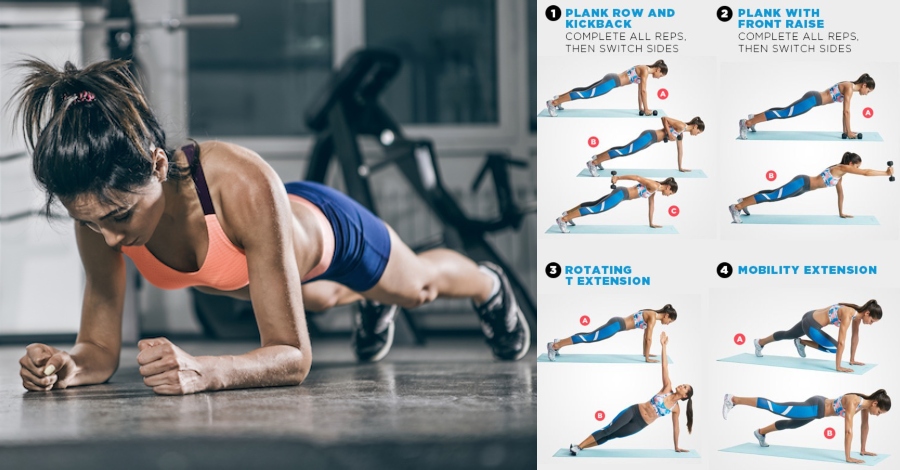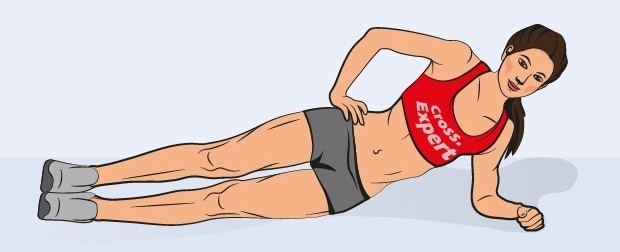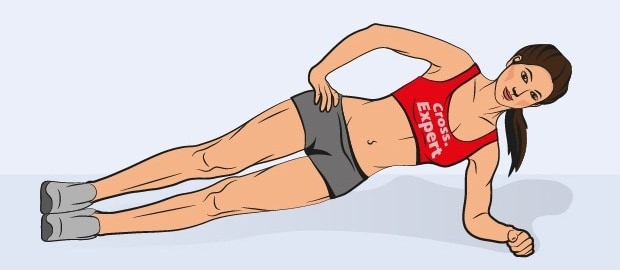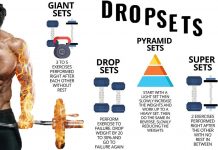The plank– is one of the most popular fitness exercises. It is often performed by athletes who want to work out the abdominal muscles as efficiently as possible, strengthen their legs and back. It is very important to do all the movements correctly, it is then that you will achieve the maximum result. There are several varieties of this exercise. The most popular, after the classic, is the side bar. It involves an increased load on the abs and shoulders, and will also help diversify the training program.
Like any physical activity, the side bar, if performed correctly, benefits the athlete’s body, allowing him to develop muscles and maintain good shape even at home. We suggest a little more detail to consider the use of the side bar.
How useful is the side plank?
So, what kind of result can an athlete get by doing this exercise daily:
- During the exercise, the athlete is in a static position. Thus, a large number of muscle groups are simultaneously involved in his work, and he can work out the muscles of the legs, torso, and forearm in one fell swoop.
- The side bar is especially appreciated for allowing the press to load well. During the exercise, both the rectus and oblique muscles of the abdomen tighten.
- Medical studies have proven that this particular exercise is able to reduce back pain in people with scoliosis and to correct curved posture. Those who suffer from this disease, daily practicing the implementation of the bar, six months later noted that the pain decreased by 32-35%.
- Also, the side bar is an indispensable tool in the struggle for the “aspen” waist. When it is performed, the muscles contract isometrically, their strength and, as a whole, “corset tightening” develops. Therefore, if you set out to remove the hated sides by summer, then pay close attention to the side plank and its variation with the failure of the hull.
What muscles work when do plank?
During the execution of the side plank, you can strengthen several muscle groups at once.
- The lateral plank, performed alternately on one and the other side, perfectly trains the large and middle gluteus, lateral thigh and calf muscles. Over time, the load on these zones can be increased by performing a complicated variation of the exercise with raising and holding the leg at the top (the higher the leg is raised, the greater the load).
- Plank has a positive effect on the cervical spine, extensors of the back and upper shoulder girdle. Due to the static stress during the exercise, athletes can not only effectively strengthen their torso, but also prevent the appearance of cervical and lumbar osteochondrosis
- With the lateral plank, the abs is also included in the work, with all its zones being both the rectus and oblique muscles of the abdomen.
- The side plank has a positive effect on the hands that have to hold half of the whole body. With proper technique, muscles such as biceps and triceps will be involved.
How to make a side plank?
Despite the fact that the exercise is technically simple, you should first master the skills of setting the body in the correct position and load distribution. Otherwise, the expected result will not be.
Exercise technique
So, in order to correctly get into the side bar, you need to follow this algorithm of actions:
- Prepare a suitable place to exercise. If possible, it is recommended to lay a special rug on the floor.
- Lie on your side. Place your elbow on the floor and lean on it as comfortably as possible. The forearm should be fully touching the floor.
- Up your hips off the mat. Keep your torso straight. The body should resemble a stretched string. Fix the position of the body and awake in this position for as long as possible.
- Rest a bit, and then lie down on your second side and do the same.




















































